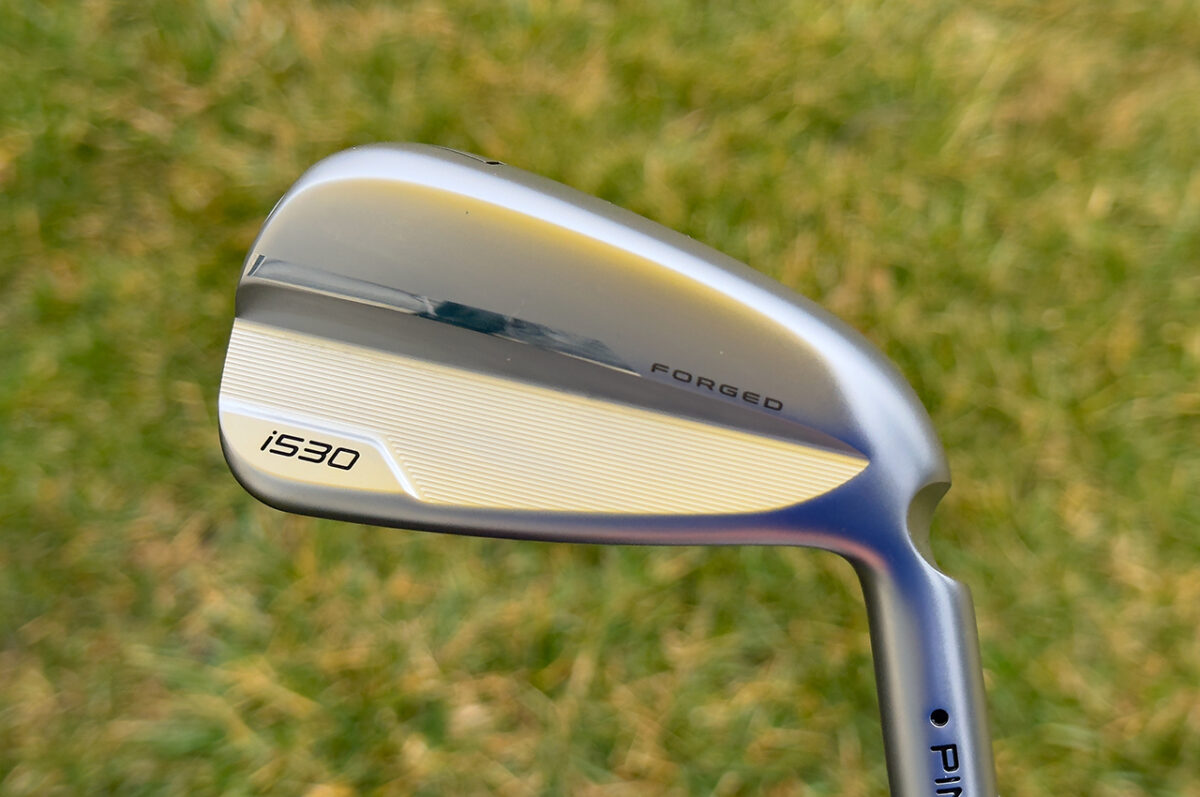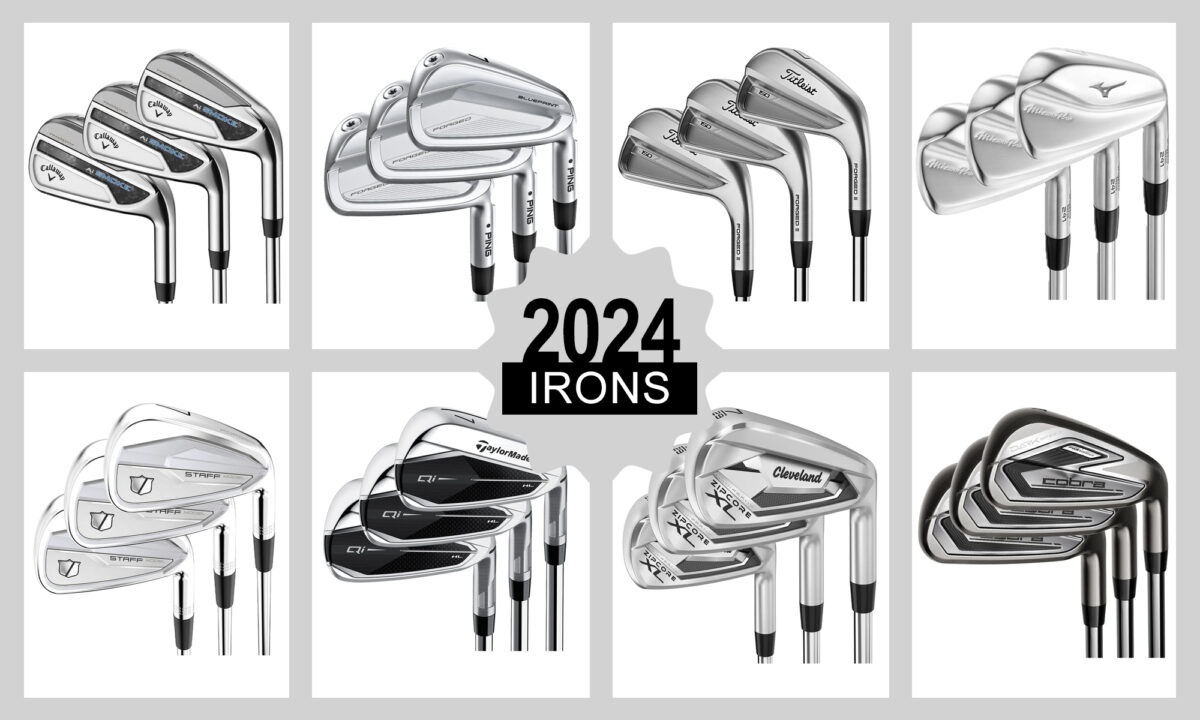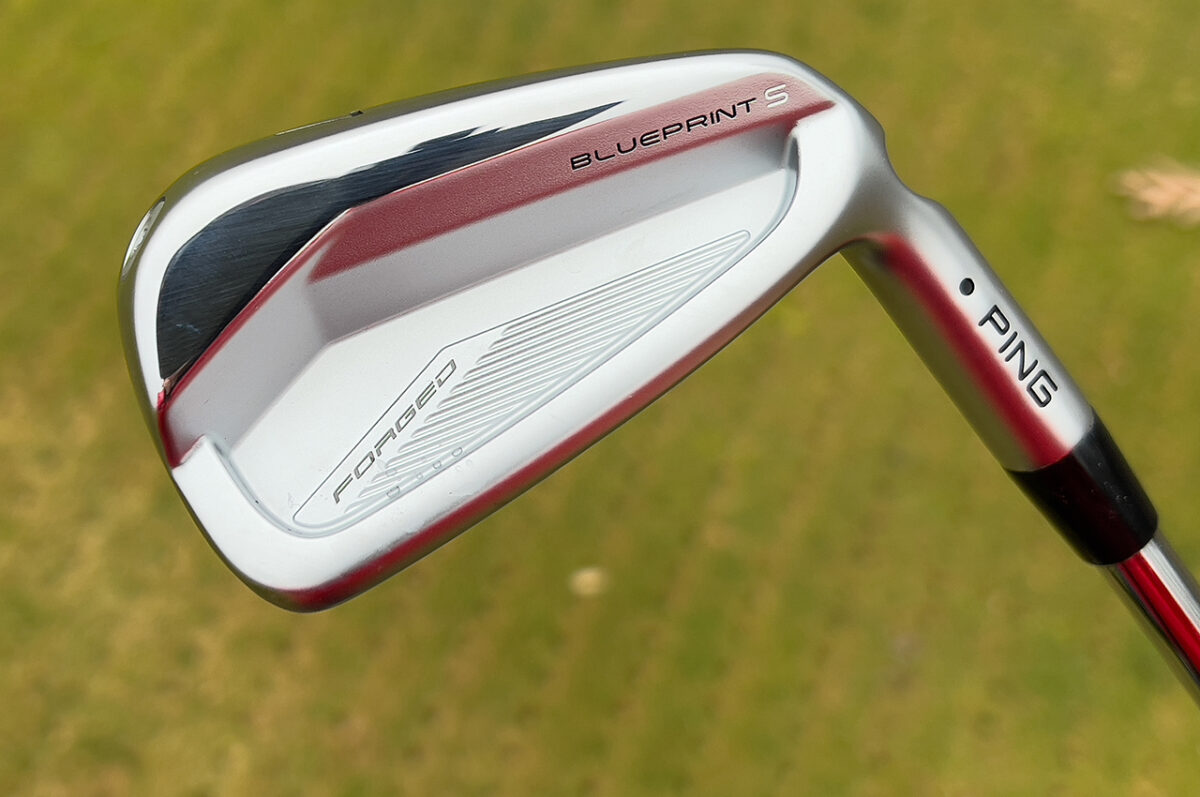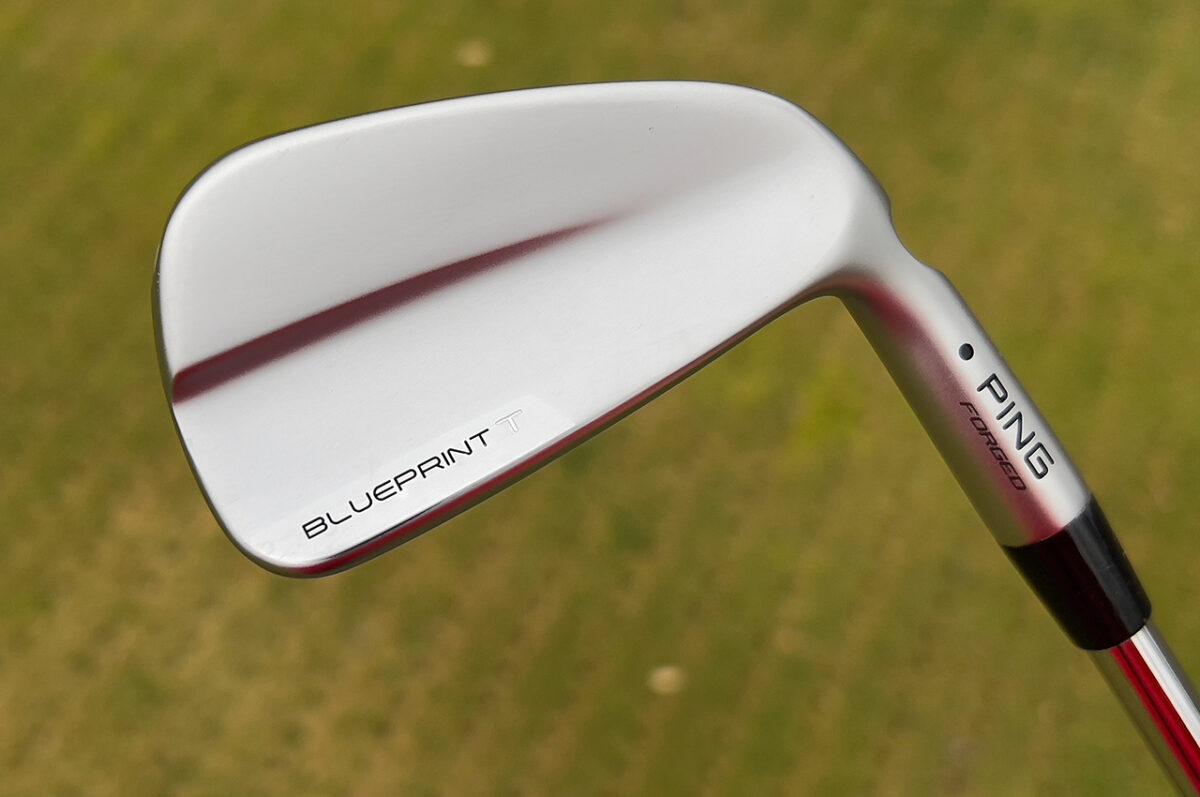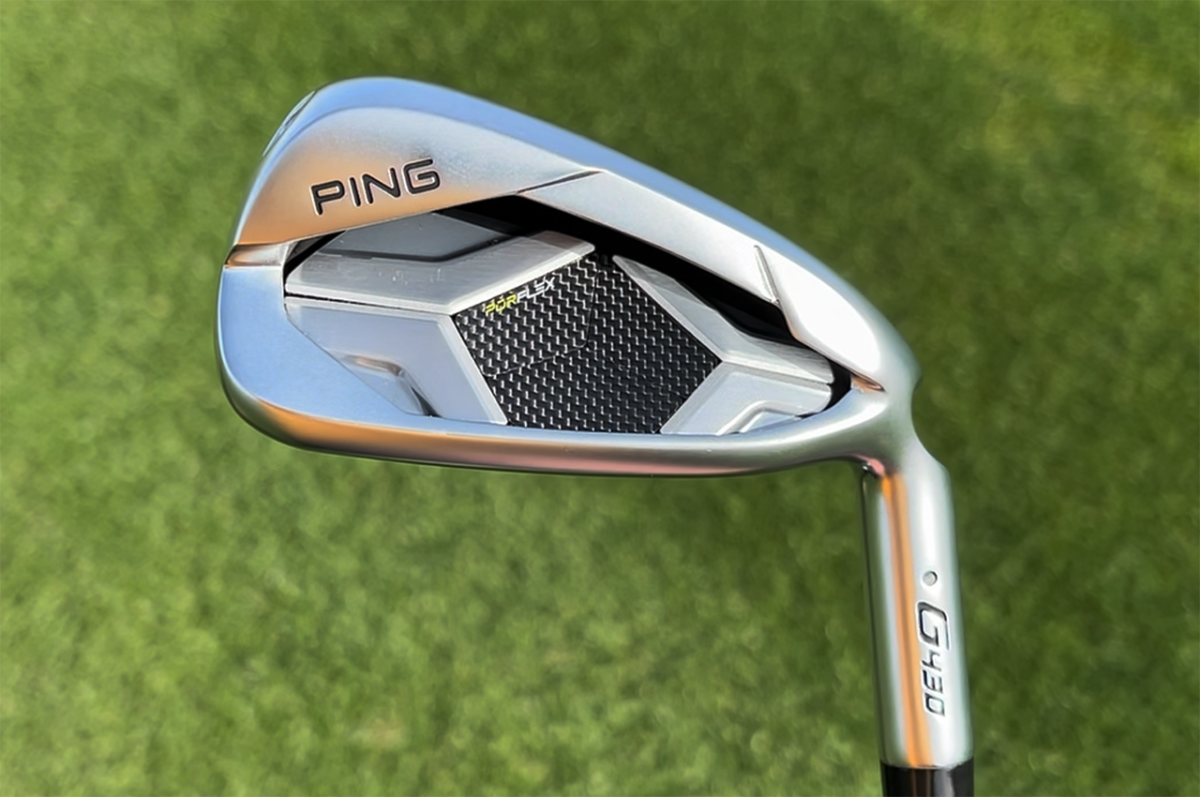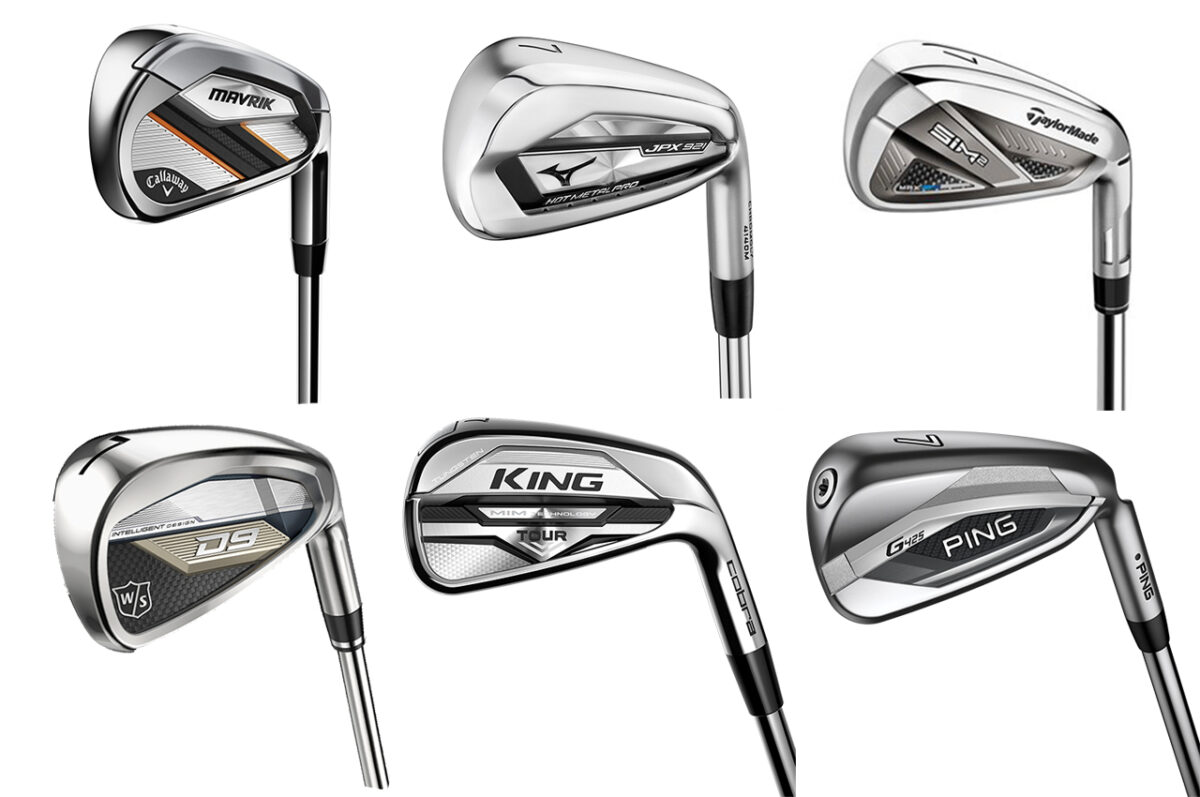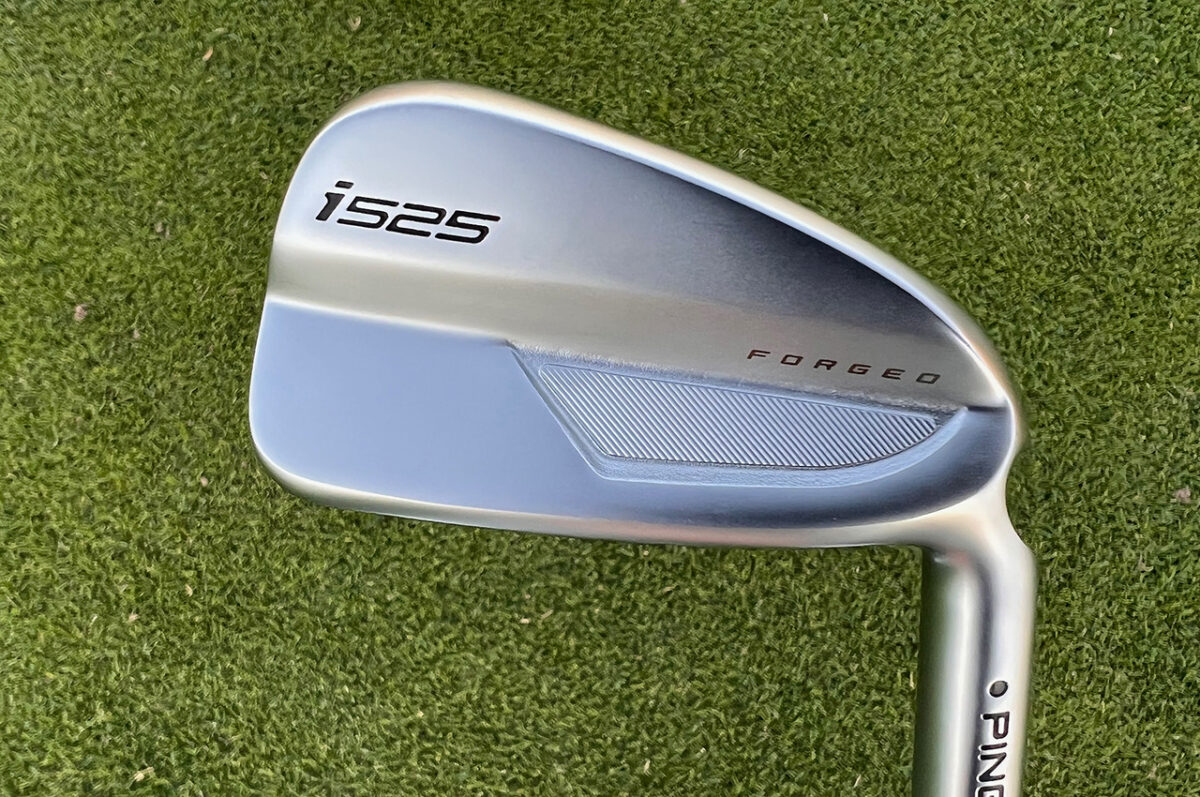Gear: Ping i530 irons
Price: $205 each with True Temper Dynamic Gold X100 steel shafts and Golf Pride 360 Tour Velvet grips. $220 each with Ping Alta CB Black graphite shafts
Specs: Forged C300 maraging steel face with 17-4 stainless steel chassis
[anyclip-media thumbnail=”https://cdn5.anyclip.com/5Y6IM44BqNyVd1U-rJeL/1710262024482_248x140_thumbnail.jpg” playlistId=”undefined” content=”PHNjcmlwdCBzcmM9Imh0dHBzOi8vcGxheWVyLnBvcHRvay5jb20vYW55Y2xpcC13aWRnZXQvbHJlLXdpZGdldC9wcm9kL3YxL3NyYy9scmUuanMiIGRhdGEtYXI9IjE2OjkiIGRhdGEtcGxpZD0iZ3ZtdG1za25ncTJlZTRrb3BmbGdpbWt2ZnZ6ZXV6a20iIHB1Ym5hbWU9IjE5OTgiIHdpZGdldG5hbWU9IjAwMTZNMDAwMDJVMEIxa1FBRl9NODMyNyI+Cjwvc2NyaXB0Pgo8c2NyaXB0IHR5cGU9ImFwcGxpY2F0aW9uL2xkK2pzb24iIG5hbWU9ImFjLWxyZS1zY2hlbWEiPgogewogICJAY29udGV4dCI6Imh0dHBzOi8vc2NoZW1hLm9yZyIsCiAgIkB0eXBlIjoiVmlkZW9PYmplY3QiLAogICJuYW1lIjoiUGluZyBpNTMwIElyb25zICIsCiAgImRlc2NyaXB0aW9uIjoiVGhlIHZpZGVvIGlzIGFib3V0IGEgZ29sZiBjbHViIGZpdHRpbmcgZm9yIGEgcGxheWVyIHdpdGggYW4gMTEgb3IgMTIgaGFuZGljYXAuIFRoZSBwbGF5ZXIgdHJpZXMgb3V0IHRocmVlIGRpZmZlcmVudCBjbHVicywgdGhlIEJsdWVwcmludCBTLCBCbHVlcHJpbnQgVCwgYW5kIC4uLiIsCiAgImR1cmF0aW9uIjoiUFQ0TTM5LjcwMlMiLAogICJ0aHVtYm5haWxVcmwiOiJodHRwczovL2NkbjUuYW55Y2xpcC5jb20vNVk2SU00NEJxTnlWZDFVLXJKZUwvMTcxMDI2MjAyNDYxNl80ODB4MjcwX3RodW1ibmFpbC5qcGciLAogICJ1cGxvYWREYXRlIjoiMjAyNC0wMy0xMlQxNjozOTozOC44OTFaIiwKICAiaW50ZXJhY3Rpb25TdGF0aXN0aWMiOnsKICAgIkB0eXBlIjogIkludGVyYWN0aW9uQ291bnRlciIsCiAgICJpbnRlcmFjdGlvblR5cGUiOiB7ICJAdHlwZSI6ICJodHRwOi8vc2NoZW1hLm9yZy9XYXRjaEFjdGlvbiIgfSwKICAgInVzZXJJbnRlcmFjdGlvbkNvdW50IjogMAogIH0KIH0KIDwvc2NyaXB0Pg==”][/anyclip-media]
Who It’s For: Golfers who want the look of a better-player’s iron combined with the distance of a game-improvement club.
The Skinny: These hollow-bodied, better-player distance irons look like blades but were made to generate more ball speed and distance while also offering enhanced forgiveness and feel.
The Deep Dive: Ping recently released the Blueprint T and Blueprint S, the new irons that comprise the “precision” offerings in Ping’s stable designed for pros and accomplished players. With its machined back and classic looks, the just-released i530 appears like it fits into that category too. However, several hidden design features and technologies set it apart and position it as a better-player’s distance iron.
The i530 replaces the i525 iron that was released in 2022, and it has a hollow-body design that is similar to the design of Ping’s metalwoods. The thin, forged C300 maraging steel face is welded to the 17-7 stainless steel body, which creates a hollow chamber inside the head. This hollow-body design allows the hitting area to flex more efficiently at the moment of impact, so golfers can generate more ball speed and distance.
[afflinkbutton text=”Shop Ping i530 irons” link=”https://worldwidegolfshops.pxf.io/Or0vWZ”]

To improve the sound and feel of impact, engineers added a polymer to the back of the face. It soaks up excessive vibrations without restricting the bending of the hitting area at impact, so it does not reduce ball speed.
When golfers see the back of the i530, they might think the milled area is there for show, but each machined line represents an area where steel was removed from a high location in the head. Machining the back and making it thinner created discretionary weight that designers were able to reposition in the form of an internal mass pad that is 10 grams heavier than the pad found in the i525. Consequently, the i530 has a lower the center of gravity (CG) location, which should help golfers create a higher launch angle and more stopping power on the greens. A bonus of positioning extra mass low in the head is it puts more steel directly behind the area where golfers tend to hit the ball, which results in extra ball speed.
To make the i530 more forgiving without making the clubs larger, Ping designed each head to house a high-density toe weight that compliments a weight added to the hosel area. The added mass increases the perimeter weighting of the heads, making them more stable on off-center hits.
In addition to a Hydropearl 2.0 finish that improves performance in wet conditions, Ping gave the i530 MicroMax grooves. Introduced on the i59 and the i230 irons, MicroMax grooves are packed more tightly together in the hitting area to enhance performance in all types of moisture conditions and reduce the effect of flier lies.
[afflinkbutton text=”Shop Ping i530 irons” link=”https://worldwidegolfshops.pxf.io/Or0vWZ”]
Below are several close-up images of the i530 irons.
